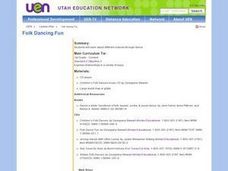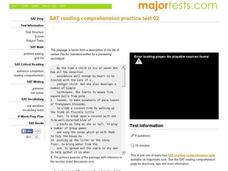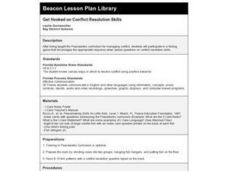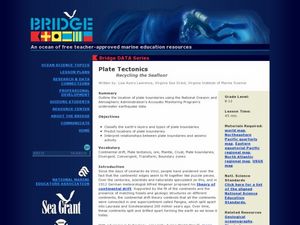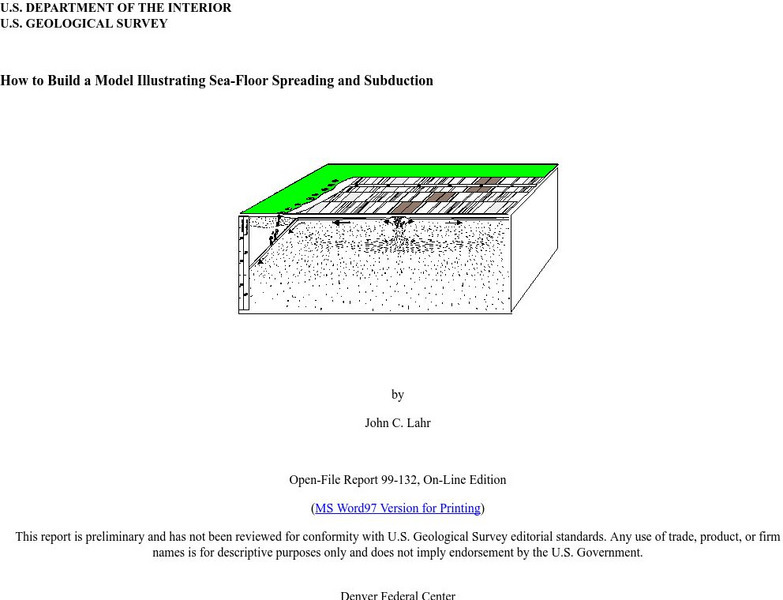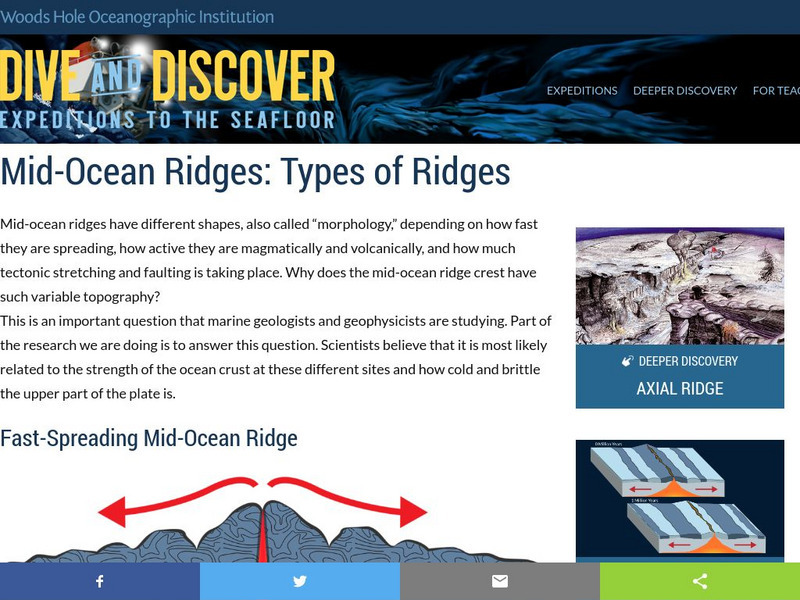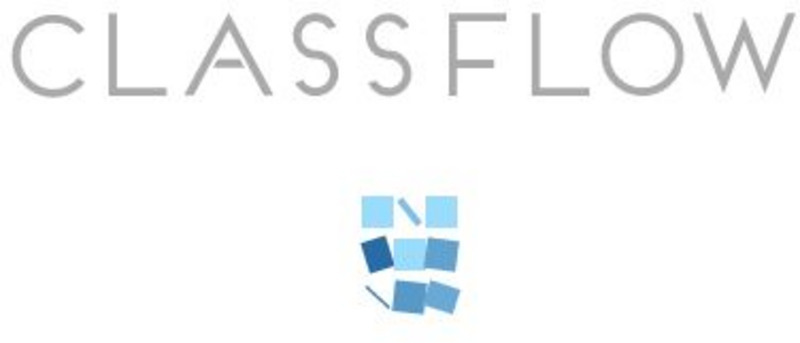Curated OER
Sea Floor Spreading II
Students import ocean bathymetry data from text files. They then graph these observations along with model predictions to assess the model's ability to simulate observed topographic features of the North Atlantic. Students use Excel to...
Curated OER
Yo-Yos, Tow-Yos and pH, Oh My!
Learners explore how hydrothermal vents are formed and where they are located on the ocean floor. They study how scientists use CTDs to locate hydrothermal vents.
CK-12 Foundation
CK-12 Earth Science Concepts for Middle School
Explore a variety of science concepts in an interactive textbook created for middle school scholars. A lengthy table of contents takes readers to pages comprised of a subject overview, outline, and summary. Follow links further to find...
Curated OER
Tomography
In this tomography worksheet, students read about how tomography is used to help oceanographers learn more about the Earth's surface below the ocean. Students complete 3 short answer questions based on the reading.
Curated OER
Bathymetry
Students study the topography of the ocean floor and the geological processes of how it is formed. They summarize what bathymetry, describe how islands are formed and illustrate a bathymetric model of the sea floor.
Curated OER
Sea Connections: Marine Ecosystems
Students identify producers and consumers from marine ecosystems and describe the balance among them in the environments. After constructing a food chain from a marine ecosystem, they examine human activities that can upset the balance...
Curated OER
Oil Spill!
Young scholars examine how oil spills are cleaned through an interactive program. They review the facts of oil spills and how the oil spreads. They discuss the short and long term effects of a spill and how they can be avoided.
Curated OER
Folk Dancing Fun
First graders discuss different kinds of music they have heard. They listen to a short selection of folk music and discuss where they think it is from. Using a globe, the teacher shows students where the music is from. They spread out on...
Discovery Education
Sonar & Echolocation
A well-designed, comprehensive, and attractive slide show supports direct instruction on how sonar and echolocation work. Contained within the slides are links to interactive websites and instructions for using apps on a mobile device to...
Curated OER
Snack Tectonics
Yum! Using graham crackers, dried fruit sheets, and frosting, tectonics technicians demonstrate the different types of plate boundaries. If you want to encourage youngsters with an activity that is both educational and edible, then this...
Curated OER
SAT Reading Comprehension Practice Test 02
This reading comprehension worksheet, modeled after the SAT, includes a passage written by a sociologist and 8 multiple choice questions. Ten minutes is allocated for this practice test.
Curated OER
How Tsunamis Form
In this earth science worksheet, learners read and study facts about tsunami and earthquakes to complete 8 short answer questions that follow.
Curated OER
The Rocks Under Illinois
The goal of this fine geology lesson is to have learners create a map that shows how the rock layers are arranged far underground where they can't be seen. The ambitious lesson plan requires high schoolers to learn the law of...
Curated OER
Density and Convection Currents
Students listen as the teacher explains convection currents in the ocean. They experiment with finding a smoking match in the classroom with their eyes closed. Students discuss what might effect their ability to pinpoint the smoke...
Curated OER
Get Hooked on Conflict Resolution Skills
Learners discuss strategies for solving conflicts and acting as peacemakers. They answer questions regarding conflict resolution skills in a fishing game, and respond to a conflict in a written journal entry.
Curated OER
Cloze Exercise: Using Qualifiers
In this using qualifiers worksheet, students use either "much" or "little" or "many" or "few" to correctly complete sentences. Students use "much" and "little" for non-count nouns and "many" and "few" for count nouns.
Curated OER
Plate Tectonics: Recycling the Seafloor
Young scholars classify earth's layers and plates using Ocean Seismicity data. In this plate tectonics lesson, students outline where the plate boundaries are on the world map. They then compare these predicted boundaries with USGS map...
Curated OER
Activity 1-Cold Water, Hot Water and Super-Heated Water!
Students investigate hydrothermal vents by observing a simple model designed to show that hot water rises when it's heated. First, students listen as the teacher explains hydrothermal fluids and vents. Students watch as the teacher...
Curated OER
WHY WE AREN'T FILTER FEEDERS
Students describe three methods of obtaining food: scavenging, filter feeding, and hunting. They describe three methods of obtaining food: scavenging, filter feeding, hunting, and list at least two reasons why humans are not considered...
US Geological Survey
Usgs: How to Build a Model Illustrating Sea Floor Spreading
This is a comprehensive website featuring how to build a model that illustrates sea-floor spreading and subduction. It has diagrams and pictures reviewing major geological concepts.
Vision Learning
Visionlearning: Earth Science: Plate Tectonics I: Geologic Revolution
Instructional module focusing on the development of plate tectonic theory. Discussion includes the evidence of Pangaea, and the processes of seafloor topography and seafloor spreading. Site also includes an interactive practice quiz and...
NASA
Nasa: Magnetic Reversals and Moving Continents
This site gives a good overview of magnetic reversals. Discusses continental drift, ocean floor magnetism, and sea-floor spreading.
Woods Hole Oceanographic Institution
Woods Hole Oceanographic Institute: Mid Ocean Ridges: Types of Ridges
A detailed, interactive look at the mid-oceanic ridge. Learn more about slow and fast spreading ridges and how the polarity of the ocean floor helps determine the speed of spreading.
ClassFlow
Class Flow: Plate Tectonics Intro
[Free Registration/Login Required] This flipchart will take several class periods. This lesson begins to look at how the different landforms are created. There will be two follow up lessons - one on volcanoes and one on mountains.









